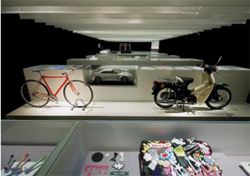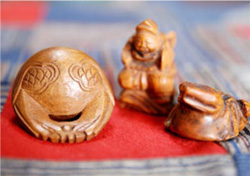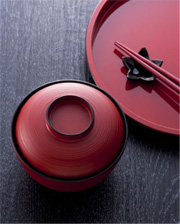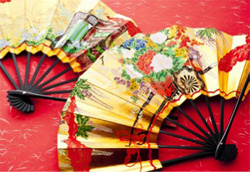Home > Highlighting JAPAN > Highlighting Japan NOVEMBER 2012 > Japanese by Design
Highlighting JAPAN
COVER STORY: Japanese by Design
Japanese by Design
Caption: From top left, clockwise: Liner PCM Recorder PCM-D1 (Sony), Hiroshima (MARUNI WOOD INDUSTRY), name-off (inf.DESIGN), SPLASH (Asano Design Studio), Copen (DAIHATSU MOTOR), Pushpin "SOFT PIN" (Kokuyo S&T), Opus-1 (EVERGREEN INTERNATIONAL), Soy sauce dispenser (Kikkoman)
Credit: COURTESY OF SONY, YONEO KAWABE, COURTESY OF INF.DESIGN, COURTESY OF ASANO DESIGH STUDIO, COURTESY OF DAIHATSU MOTOR, COURTESY OF KOKUYO S&T, COURTESY OF EVERGREEN INTERNATIONAL, COURTESY OF KIKKOMAN
Since World War II, Japanese products have come to be appreciated for their high quality and found fans all over the world. Now, Japanese design is also drawing attention. This applies to diverse areas including fashion, furniture, architecture, food and daily life. The high marks given to diverse designs created in Japan not only reflects beautiful appearance and uniqueness, but also comfort, convenience, and care for users. This month's Cover Story discusses the history, features, and roles of designs created by Japanese that are taking the world by storm, and the thoughts of the people who have dedicated themselves to design.

WA: The Sprit of Harmony and Japanese Design Today at the Japan Cultural Institute in Paris, France
Credit: PHOTO: C.-O.MEYLAN/COURTESY OF JAPAN FOUNDATION
"Japanese designs created in recent years have been founded on the spirit of harmony. Things that appear remote have fused to create a design, such as urban and rural, traditional craft and high-tech, and Japanese and Western," says Professor Hiroshi Kashiwagi of Musashino Art University, who is among the curators of the WA Exhibition. "For example, a designer who lives in a large city collaborated with persons working in local traditional industry to create a product. Initiatives like this have been made all over Japan."
There are characteristics peculiar to contemporary Japanese design. In the WA Exhibition, about 160 works were grouped into twelve categories and based on six keywords. One of the keywords is "kawaii (cute)." In the WA Exhibition, "kawaii" cars, stationery and other products were exhibited.
"The Japanese word 'kawaii' has been translated as cute. These days, the scope of designs described as kawaii has widened significantly," says Professor Kashiwagi. "Something that is feminine, fragile and soft can also be described as kawaii."

Japanese people have long cherished small items, such as netsuke.
"I visited the Exhibition when it was held in Maison de la culture du Japon à Paris. Visitors were looking at the exhibits with great enthusiasm, and this left a deep impression on me. I met with Germain Viatte, who formerly served as the director of Centre Pompidou. He praised the exhibition strongly, calling it wonderful and beautiful," says Professor Kashiwagi. "And many people were asking where they could purchase the exhibited products. I hope there will be more shops overseas that handle products with excellent design. For example, furniture made in Japan has been accepted worldwide, and it seems to have excellent potential."

In Japan, ordinary people have incorporated beauty into their daily lives with the use of crafts such as lacquerware.
Beauty of Japanese design
What is the history behind these characteristics of Japanese design? Cultural critic Masakazu Yamazaki has mentioned three features of the beauty of traditional Japanese design formed prior to the Meiji period (1868–1912). The first is a love of the miniature. The Japanese people have cherished small items. Examples include netsuke, bonsai and tea cups. Second is the beauty found in daily life. In Japan, ordinary people have incorporated beauty into their everyday lives. Lacquerware and ukiyo-e prints are just two examples.

Many fine Japanese craft works can be used and enjoyed in the hand.
Designs of traditional beauty of Japan influenced European design also. Japonism was a popular movement in European art that arose around the mid-nineteenth century, influenced by ukiyo-e prints and other craft works of Japan. For example, the beauty of curved lines and nature found in the Art Nouveau style also show the influence of Japonism.
It may be concluded that the long history of Japanese design has supported contemporary Japanese design.
© 2009 Cabinet Office, Government of Japan







